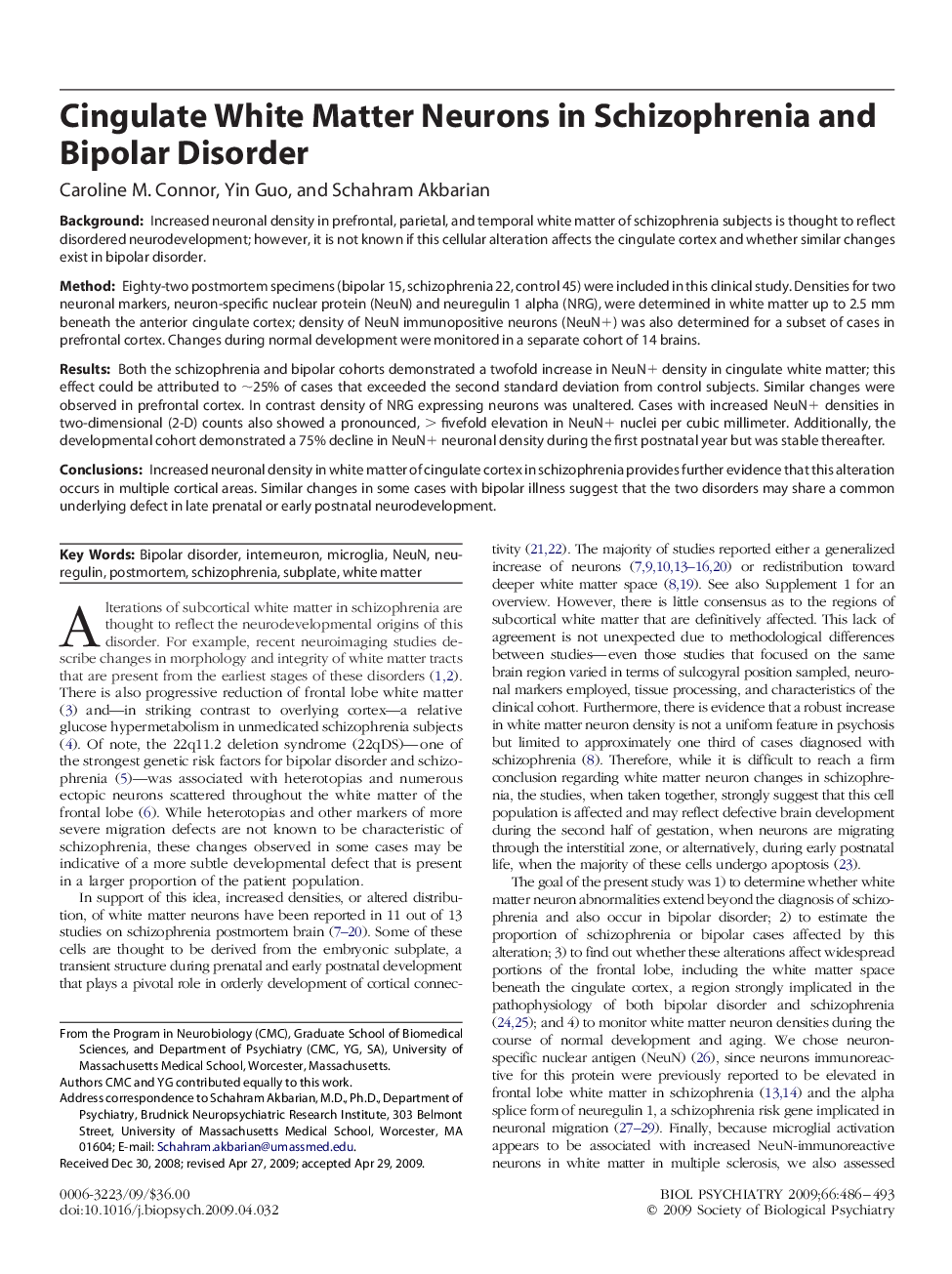| Article ID | Journal | Published Year | Pages | File Type |
|---|---|---|---|---|
| 6228536 | Biological Psychiatry | 2009 | 8 Pages |
BackgroundIncreased neuronal density in prefrontal, parietal, and temporal white matter of schizophrenia subjects is thought to reflect disordered neurodevelopment; however, it is not known if this cellular alteration affects the cingulate cortex and whether similar changes exist in bipolar disorder.MethodEighty-two postmortem specimens (bipolar 15, schizophrenia 22, control 45) were included in this clinical study. Densities for two neuronal markers, neuron-specific nuclear protein (NeuN) and neuregulin 1 alpha (NRG), were determined in white matter up to 2.5 mm beneath the anterior cingulate cortex; density of NeuN immunopositive neurons (NeuN+) was also determined for a subset of cases in prefrontal cortex. Changes during normal development were monitored in a separate cohort of 14 brains.ResultsBoth the schizophrenia and bipolar cohorts demonstrated a twofold increase in NeuN+ density in cingulate white matter; this effect could be attributed to â¼25% of cases that exceeded the second standard deviation from control subjects. Similar changes were observed in prefrontal cortex. In contrast density of NRG expressing neurons was unaltered. Cases with increased NeuN+ densities in two-dimensional (2-D) counts also showed a pronounced, > fivefold elevation in NeuN+ nuclei per cubic millimeter. Additionally, the developmental cohort demonstrated a 75% decline in NeuN+ neuronal density during the first postnatal year but was stable thereafter.ConclusionsIncreased neuronal density in white matter of cingulate cortex in schizophrenia provides further evidence that this alteration occurs in multiple cortical areas. Similar changes in some cases with bipolar illness suggest that the two disorders may share a common underlying defect in late prenatal or early postnatal neurodevelopment.
